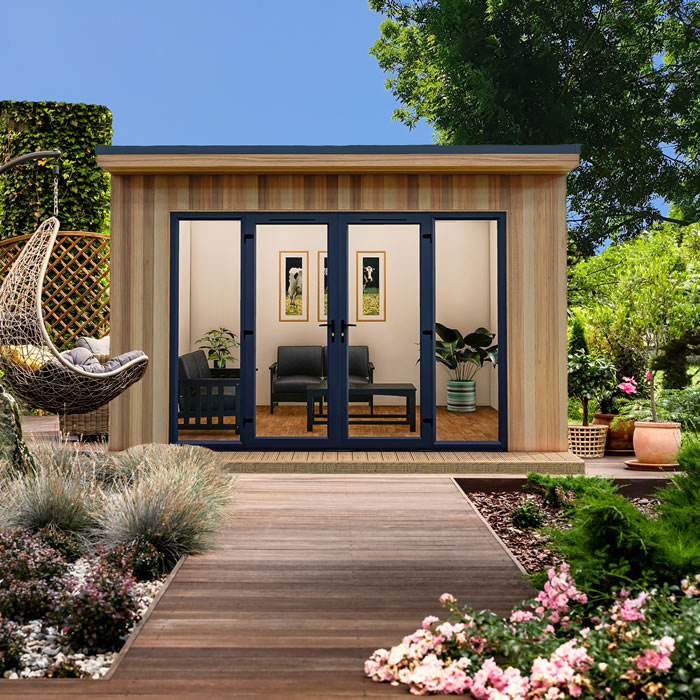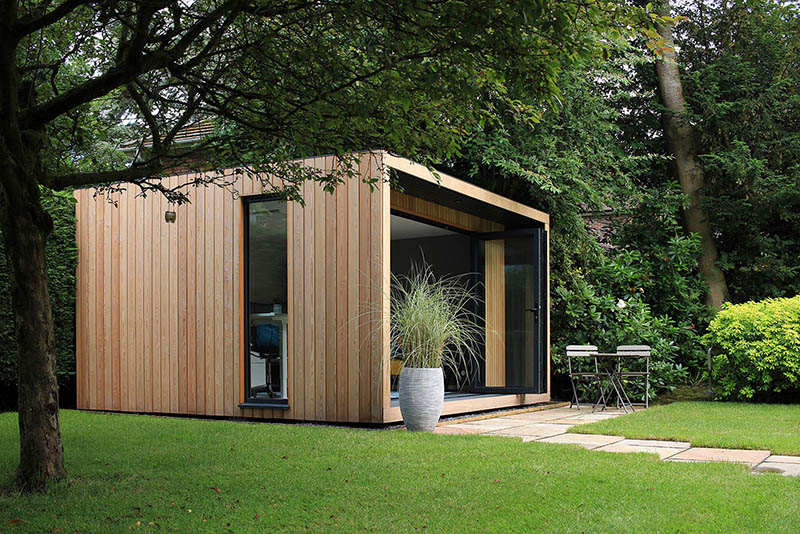Good Advice For Planning Permission For Garden Offices
Good Advice For Planning Permission For Garden Offices
Blog Article
What Type Of Planning Permission Are Required To Build Garden Rooms Within Conservation Areas?
In conservation areas, there are specific limitations to preserve the character and look of these areas. Planning permits are required in conservation areas. Here are some important aspects to be considered.
In conservation areas planning permits are required for any building or extension that is a allowed development. This is the case for garden rooms, sheds, and outbuildings.
Size and Scale
Any structure, regardless of its size, may need planning permission if it's believed that the structure will impact the conservation area's characteristics. Extensions and new buildings in designated zones are subject to more stringent rules.
The Location of the Property:
The probability of a building needing planning permission is higher if the building or extension is situated to the side, front or rear. Planning permission might be needed for rear structures when the structure is visible from public places or impacts the overall character.
Materials and Design
The design and selection of materials are crucial in conservation areas. A new extension or building should use materials that are conforming to the historic or architectural value of the region. These criteria will require permission for planning.
Demolition:
To ensure that any changes made to the area aren't detrimental to its character The planning permit is required for demolitions of the existing or a portion of structures that are in use, like outbuildings and boundary walls.
Height restrictions:
In conservation zones, there are more strict height restrictions. Planning permits are required for any structure that exceeds 2.5 meters (especially in the case of structures that are within 2 meters of a boundary).
Impact on Surroundings
Planning permission might be required when a proposed construction extension, expansion or alteration to the appearance or setting of the conservation zone is likely to have a negative impact on its appearance and surroundings.
Use of the Building
There is a chance that a garden structure or room may fall within the allowed space limit, but its intended use, such as being a home studio, office or habitable area, could require approval from the planning department.
Modifications to the original design:
Planning permission will be required for any extensions that are greater than the size or volume limit or change the appearance of exteriors. This is the case for conservatories and other major changes.
Curtilage Structures:
The curtilage of a listed building within conservation districts always require permission for planning. This includes the construction of new outbuildings and extensions.
The Trees are protected
Trees within conservation areas are protected. In the event that your proposed construction will impact trees, you may need to obtain additional permissions including an authorization for tree work and a planning permit.
Local Authority Guidelines:
Local planning authorities set guidelines and restrictions specific to each conservation zone. These criteria can be tailored to meet the specific nature and character of each area.
In short, in order to get planning permission in conservation areas it is essential to determine how your proposed garden room or conservatory affects the region's architectural and historic character. Early consultation with the local authority for planning is vital to ensure compliance with all guidelines and regulations. Have a look at the most popular small office pod garden for more recommendations including garden rooms brookmans park, outhouse building, composite garden office, what size garden room without planning permission, luxury outhouse, best heater for log cabin, garden office hertfordshire, garden room or extension, out house, garden rooms in St Albans and more.
What Planning Permission Do You Need To Build Garden Rooms, Etc. Terms Of Listed Buildings?
Specific considerations and regulations are needed when creating conservatories, garden rooms or outhouses on the premises of a listed building. These are the major factors to consider when planning permissions are required for such projects. A Building Consent to be Listed
Typically, any modifications or extensions, as well as new buildings within the boundary of a building that is designated requires the approval of a listed building as well as planning approval. The reason for this is that changes could alter the appearance and significance of the property listed.
The impact on the historical character
This covers garden rooms as well as outbuildings. This includes garden buildings and outbuildings.
Design and Materials
It is important that the materials and design used in the construction of the new structure are compatible with the architectural and historic importance and value of the original building. It may be necessary to design bespoke plans and the usage of traditional materials necessitating the approval of a planner.
Proximity to the listed building:
New constructions built near historic sites are scrutinized to determine their effect on the setting and appearance. If they are to not affect the building’s character the building's character, planning permission has to be obtained.
Scale and size:
The proposed size of the conservatory, garden room or extension should be in proportion to the size of the building. Larger structures tend to need a thorough analysis and planning approval.
Location on the Property
The position of your new structure (whether it is in front, to the side or at the back of the building) will determine whether you need planning permission. Locations that are prominent or have a significant influence on the building's main views are usually the subject of a thorough examination.
Changes in the internal structure:
If the structure being built is separate from the building it is attached to, then any changes made to it (such as adding new access points) will require approval for planning and listed building permits.
Conservation Area Overlap
If the building is within a conservation area, additional restrictions are in place. A permit for planning is required to comply with both the conservation zone regulations.
Use of Building:
The location of an outbuilding, or a garden room can impact the need to obtain a permit for planning. Planning permission is required for purposes that represent a substantial change, such as residential accommodations or commercial use.
Impact of structural changes:
Planning approval is needed for any work which could impact the structural integrity of the building. This will ensure that the old and new structures are seamless.
Local Authority Guidelines
Local authorities typically have their own guidelines for listed buildings that define the types of construction and modifications are permissible. Planning permission is required to ensure that the guidelines are adhered to.
Professional Assessments
Proposals for work on listed buildings often require detailed assessments by conservation professionals. These assessments assess the suitability and support of the proposed modifications.
It is vital to keep in mind that planning approval or listed building permission will almost always be required to permit the construction of garden rooms, conservatories and outhouses as well as garden offices, extensions or garden offices incorporated into listed buildings. A prompt consultation with your local experts in heritage and the planning authorities is essential to ensure that the regulations are adhered to and that the historical and architectural integrity of the property is maintained. Have a look at the best how to lay electric cable in the garden uk for more info including garden rooms in St Albans, garden outhouses, costco garden buildings, costco outbuildings, garden room heater, myouthouse, garden rooms near me, armoured cable for garden room, outhouse buildings, garden outhouse and more.
What Type Of Permit Will I Require To Construct An Outdoor Space, For Example?
The appearance and style of the building will decide the need for planning permission. is needed to build garden offices, conservatories and outhouses as well as gardens rooms. Here are key considerations.
Planning permission might not be required if the structure proposed is within your permitted development rights. There are certain aesthetic and design requirements which must be fulfilled.
Size and Scale:
The size and scale must be in proportion to the surrounding property and other buildings. Planning approval is required for buildings that are larger than the limits stipulated in the allowed development rights.
Mass and Height:
The dimensions of existing structures and properties adjacent to them should be reflected in the mass and height. Planning permission is usually required for buildings that are over the height limit or not in scale with the buildings around it.
Materials and finishes
The selection of materials and finishes should be in harmony with existing properties and the buildings surrounding the area. It is possible to obtain planning permission if materials are not compatible with the character and design of the space.
Design Harmony
The new design should be in harmony with the existing buildings and the property around it. Planning permits are required if the design does not match the local style or character.
Roof Design:
The design of a roof must be in harmony with the existing architecture and that of the buildings around it. The roof design that is proposed may require permission to plan if it's not in keeping with the local style and character.
Fenestration:
The design and layout of windows and doors should be harmonious with the surrounding property. The proposed fenestration might require planning approval if it's not compatible with the local character and appearance.
Treatment for Facades
The exterior treatment must be in harmony with the surrounding buildings and structures. If the proposed design of the facade isn't compatible with the local appearance and style, a planning permit might be required.
Landscaping and Surroundings
The landscaping around the proposed structure should be compatible with the existing landscaping and buildings. The proposed landscaping might require approval from the planning department if it does not match the local style or character.
Visual Impact:
The new structure should have minimal visual impact on its surroundings. If the structure proposed will have a negative visual effect on the surroundings, then planning permission might be required.
Heritage and Conservation Areas
If the property located within an area designated as an historic site or to preserve its natural beauty, design and aesthetic criteria may be more stringent. Planning permission might be needed for any new structure which does not meet these requirements.
Architecture and Guidelines for Planning
Local planning agencies often have strict rules regarding the design and appearance of buildings. The structure might require permission to plan when it is not in accordance with these guidelines.
The appearance and design of the space is often what determines whether planning permission is granted for conservatories or gardens. It is vital to consult with your local planning authority at an early stage of the process of planning to ensure you're complying with local guidelines regarding character and appearance and determine whether planning consent is required. Read the most popular outhouse extension for blog advice including outhouse for garden, costco garden rooms, Tring garden rooms, luxury outhouse, garden room or extension, costco garden office, garden rooms near me, costco outbuildings, costco garden buildings, garden room conservatory and more.